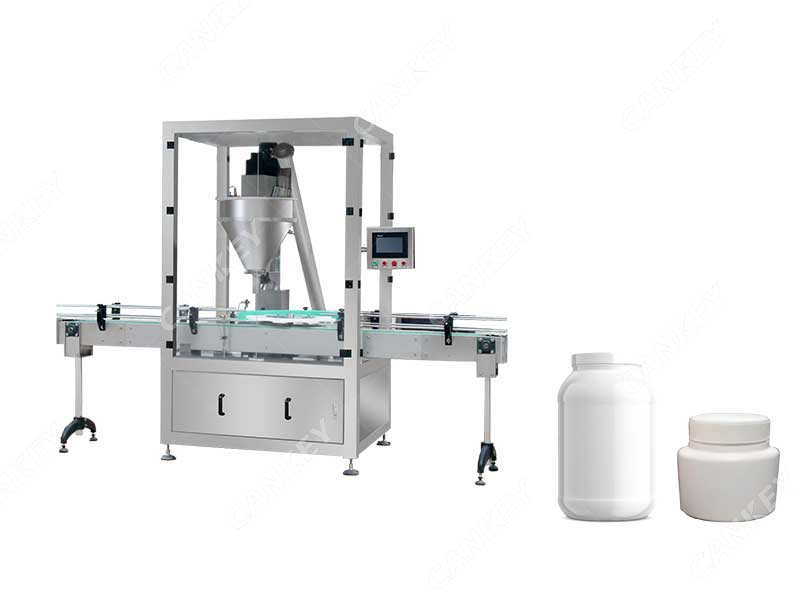The powder filling machine working principle is related to their metering method. Here we will explain the working principle of different measurement methods in detail.
Powder filling machine, from the perspective of quantitative principle, there are mainly two ways: volume type, weighing type
- Volumetric
Volumetric quantitative filling is achieved by controlling the volume of the material to be filled to achieve quantitative filling, and screw type quantitative filling machines belong to the category of volumetric quantitative filling. Its advantages are simple structure, no need for weighing device, low cost and high filling efficiency. The disadvantage of the screw type quantitative filling machine is that the filling accuracy varies greatly depending on the material to be filled, which mainly depends on the stability of the specific gravity of the material to be filled, the uniformity of the size of the material particles, and the hygroscopicity and looseness of the material. and other characteristics. Therefore, the main applicable object of volumetric filling is the material particles with uniform material particles, relatively stable bulk density and relatively good self-fluidity.
Volumetric quantitative filling packaging is divided into two forms according to the different measurement methods of materials. One is to control the flow or time of the material to be filled to control the filling volume. For example, the volume of the filling material is controlled by controlling the rotation number or time of the screw of the screw filling machine, and the volume of the material is controlled by controlling the vibration time of the vibrating feeder. Another form is to use the same measuring container to measure the material to achieve quantitative filling, such as a measuring cylinder, a measuring cup or a plunger type quantitative filling machine. No matter which volumetric quantitative filling method is used, there is the same problem, that is to try to ensure the stability of the bulk density of the material to be filled. In order to achieve this requirement, vibration, stirring, nitrogen filling or vacuuming are often used to accomplish. If the filling accuracy is very high, it is necessary to use an automatic detection device to continuously detect the change of the apparent specific gravity of the material to be filled, and then continuously adjust to ensure the accuracy of the filling volume.
2. Weighing type
The weighing type quantitative filling is to ensure the filling accuracy by controlling the weight of the material to be filled. Compared with the volumetric quantitative filling mentioned above, the structure is more complex, the cost is higher, and the filling efficiency is lower than that of the volumetric filling. The filling objects are mainly materials with uneven particle size, unstable bulk density and relatively high price. At present, there are mainly three kinds of scales used for weighing quantitative filling, which are mechanical lever scales, electronic scales and mechanical-electronic combined scales.

